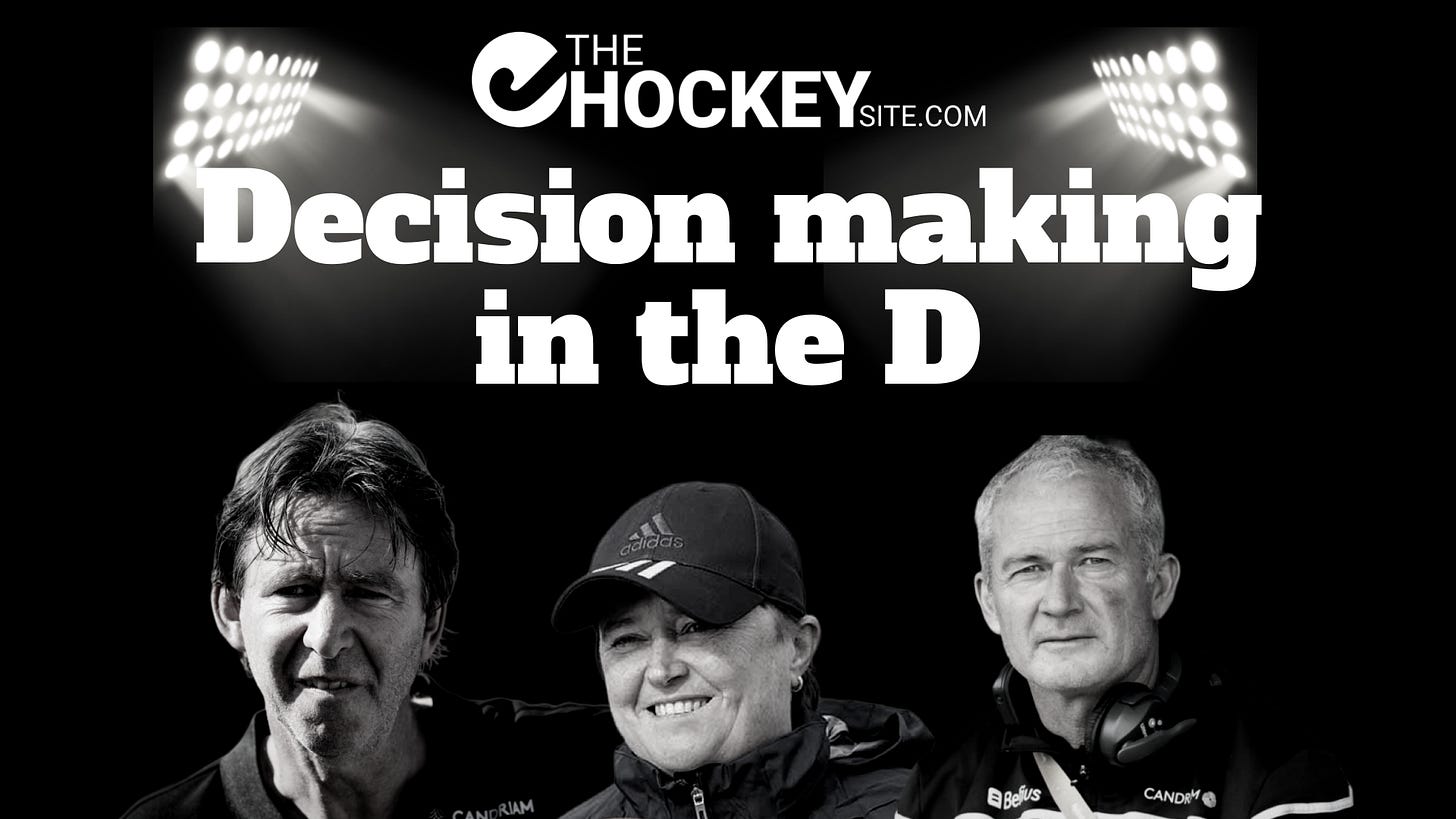Decision making in the D
Some insights about attacking patterns and training these from Annan, Ehren and McLeod
When it comes to attacking patterns of play and practices, there are several key principles and drills that top coaches emphasize. Here are five patterns and practices that stand out, based on insights shared by some of the best minds in field hockey coaching:
1. Creating Time and Space in the Circle
Alyson Annan, during her masterclass on circle behavior, highlighted the importance of passing with intent. She broke down three types of passes: build-up passes (to move the opposition and create space), attacking passes (to accelerate forward and initiate the attack), and scoring passes (to set up a player in an optimal shooting position).
A key practice here is training players to recognize and execute these passes under pressure, focusing on the intent behind each pass rather than just the technique.
2. Getting Numbers in the Circle
Another critical attacking pattern is ensuring attackers position themselves effectively in the circle. Annan emphasized the importance of attackers avoiding the temptation to always participate in the build-up phase. Instead, they should focus on positioning themselves in front of the goal, creating shooting opportunities while maintaining enough space for effective play.
A practice for this involves simulating game scenarios where attackers must decide when to stay in the circle and when to engage in the build-up.
3. Dynamic Turnaround Exercises
Raoul Ehren, in his AMA session, discussed the value of turnaround exercises to simulate transitions from attack to defense and back to attack. For example, a 4v4 drill where attackers lose the ball and must quickly transition to defend, followed by a counter-attack opportunity. This not only trains intensity but also reinforces principles like compactness and quick decision-making during transitions.
4. Vertical Penetration and Circle Entries
Ehren also stressed the importance of vertical play and aggressive circle entries. Players are encouraged to take on one-on-ones and aim for as many circle entries as possible. A practice for this could involve setting up zones on the pitch where players must navigate through defensive lines to enter the circle, focusing on creating and exploiting space.
5. Winning the Ball and Counter-Attacking
Shane McLeod highlighted the importance of pressing and winning the ball as a foundation for attacking play. A practice here involves setting up outnumbered situations (e.g., 3v1) where players must work together to win the ball and immediately transition into a counter-attack. This trains both defensive and attacking instincts, ensuring players are ready to capitalize on turnovers.
These patterns and practices are not just about technical execution but also about fostering the right mindset and decision-making under pressure.
If you're looking for an answer to your own coaching questions, ask your question here to get an answer based upon the many, many talks I had with some of the best coaching minds in the game of hockey 🏑
And if you’d like tailored advice for your team, you can always book a session with a top coach via https://gotyourback.app 👍
Sources:








